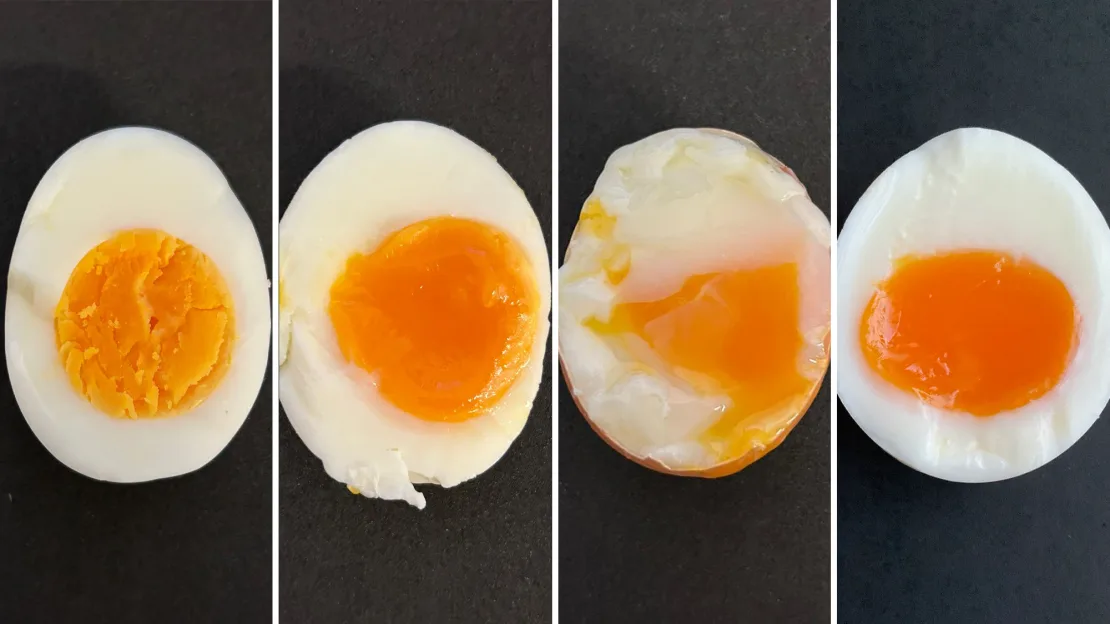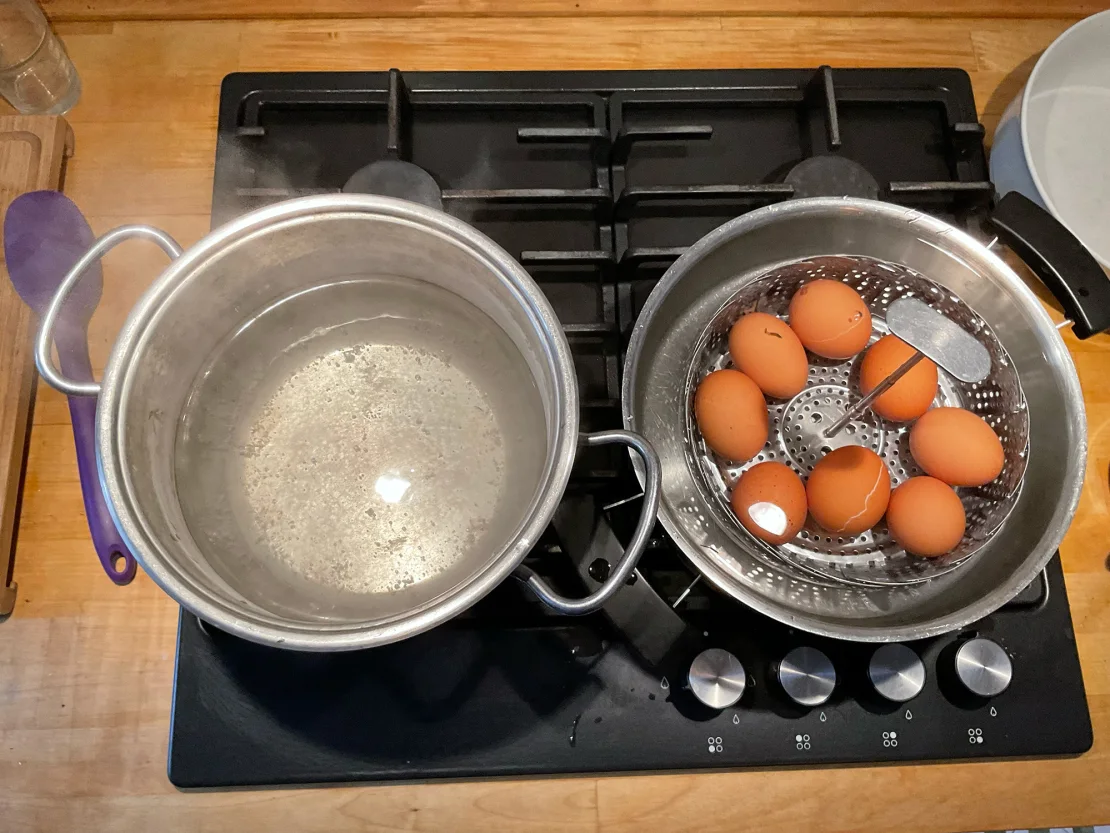If you think you’ve mastered the art of boiling eggs, you might still be missing the secret to achieving the perfect boiled egg.
Cooking an egg to perfection is tricky because the egg white (albumen) and yolk have different compositions, requiring distinct temperatures for optimal texture and taste. However, scientists believe they have finally cracked the code with a method called periodic cooking.
This technique involves cycling the eggs between hot and lukewarm water, ensuring that both the albumen and yolk cook evenly without overcooking one or the other. According to a study published on February 6 in Communications Engineering, this method not only enhances texture and flavor but also preserves more nutrients compared to traditional techniques like hard-boiling or sous vide.
“As a chef, this method makes perfect sense,” said Micah Siva, a San Francisco-based dietitian and recipe writer. “Cooking is a science, and adjusting temperature based on protein structure can significantly improve quality.”
The best part? You can try periodic cooking at home. Dr. Ernesto Di Maio, the study’s lead author, conducted the experiment in his own kitchen, proving that no specialized equipment is needed—just 32 minutes and a bit of patience.

The Science Behind the Perfect Boiled Egg
Rather than relying on trial and error, Di Maio and his team used mathematical models to predict how heat transfers through an egg. These models helped them determine the precise time intervals to alternate between hot and lukewarm water.
To test periodic cooking, researchers heated a pot of tap water on the stovetop, carefully monitoring temperatures with a food thermometer. They experimented with four cooking methods—hard-boiling, soft-boiling, sous vide, and periodic cooking—using 160 eggs in total (40 per method).
- Hard-boiled eggs: Cooked for 12 minutes
- Soft-boiled eggs: Cooked for 6 minutes
- Sous vide eggs: Cooked at 65°C (149°F) for an hour
- Periodic cooking: Alternated between 2-minute cycles in boiling water (100°C/212°F) and lukewarm water (30°C/86°F) for a total of 32 minutes

While traditional methods gradually increased the egg’s internal temperature, periodic cooking maintained a steady yolk temperature of 67°C (152.6°F) while allowing the albumen to reach a firmer consistency.
The result? The yolk achieved a jelly-like balance between solid and liquid, while the albumen set perfectly without becoming overly firm or rubbery.
Is It Worth the Effort?
Despite the scientific precision behind periodic cooking, some experts remain skeptical about its practicality.
“Most people just want a quick and easy way to cook an egg,” said Siva. “Spending 32 minutes on something as simple as boiling an egg might not be realistic for everyone.”
However, for those who appreciate culinary perfection, periodic cooking offers a unique texture and an enhanced nutrient profile. Researchers found that this method preserved the highest levels of polyphenols—antioxidant compounds linked to reduced inflammation and disease prevention—compared to other cooking techniques.

While the nutritional differences may be minor, eggs remain an excellent source of protein and healthy fats, no matter how they’re cooked. But if you’re looking to take your egg-boiling skills to the next level, periodic cooking might be worth a try.